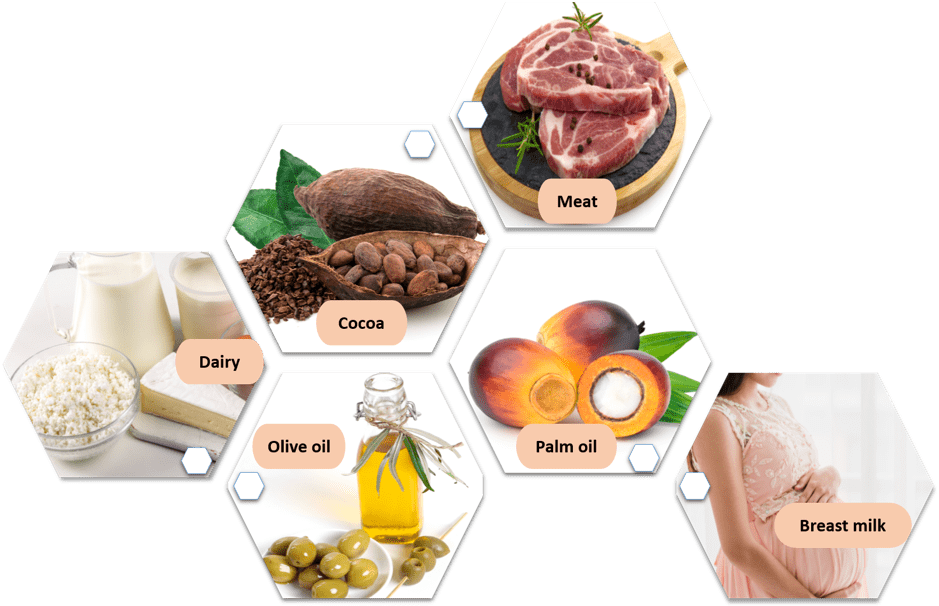On 10th November 2021, the article “Fatty acid found in palm oil linked to spread of cancer” was published in The Guardian.
Fatty acids in diet are complex. A single food may contain a few types of fats (solid or soft, or both) and in every fat or oil, the fatty acid composition differs from one another and is each broken down differently in our system. In a typical human diet, we typically consume fats as a whole, not the individual fatty acids making up the fat. Thus, the effects of fatty acids must be considered as a whole rather than single fatty acids. Hence, to single out one fatty acid from one type of fat and claim that that single compound alone can cause or is linked to the spread of cancer, is a bit of a stretch.


As a matter of fact, palmitic acid (PA) is present in many other fat sources, such as palm oil, butter, olive oil, rice bran oil, and more. However, the article refers to a study (Pascual et al.,2021) that sourced palmitic acid only from palm oil. But the study did not make comparative analysis of the metastasis in mouth and skin cancer cells between palmitic acid sourced from various types of fats and oils. It therefore leaves a loophole in the carcinogenicity of palmitic acid from fats and oils other than palm oil (and its derivatives).
On average, a 70 kg man is made up of 3.5 kg of PA. As the name suggests, PA is a major component of palm oil (44% of total fats). But significant amounts of PA can also be found in meat and dairy products (50–60% of total fats), as well as cocoa butter (26%) and olive oil (8 – 20%). As a matter of fact, human breast milk also contains between 20 – 25% PA and it is the main fatty acid found in most mammals’ milk – including that of bovine (Carta et al., 2017). Even though the content of PA in palm oil is relatively high, a typical intake of fats in daily diet is no more than 60g of total fats per day (30% of total energy intake). This means at the end of the day, the absorption of palmitic acid from food is minimal.
The fatty acid composition in palm oil is made up of:
- Saturated fats: 45% palmitic acid & 5% stearic acid
- Monounsaturated fat: 40% oleic acid
- Polyunsaturated fats: 10% linoleic and linolenic acids (omega 3 & 6)
The same study claimed that certain fatty acids may cause cancers, not just palmitic acid. According to the study, different tumour types have exhibited specific fatty acid preferences during metastasis. Oleic acid – also another fatty acid found in many fats and oils – has shown inhibiting properties in the metastasis of oral and skin cancer but has shown stimulating properties in the metastasis of cervical and gastric cancers. Metastasis can be caused by many factors, not just fatty acids. The reason(s) underlying metastatic growth from primary tumours is multifactorial with contributions from genetic influences and non-genetic factors, including changes in environment and lifestyle exposures. However, the author of the article spun a narrative only on the palmitic acid from palm oil, conveniently omitting others.
In addition, looking at the methodology of the referenced study, a high fat Western diet of 42% of total energy from fats was supplemented from palm oil and olive oil. However, no effort was taken to show the exact amount used (dose-response relationship) and also no ‘low’ and ‘medium’ fat diet as variables to compare the effects. Like in any study, when the supplement used is high, any nutrient can potentially be toxic or carcinogenic. Therefore it can be said that the study purposely supplies a high fat diet to make a biased case putting the blame solely on palm oil.
References:
- Carta, Gianfranca et al., 2017. Palmitic Acid: Physiological Role, Metabolism and Nutritional Implications. Frontiers in physiology, vol. 8, 902, doi:10.3389/fphys.2017.00902
- Gloria Pascual et al., 2021. Dietary palmitic acid promotes a prometastatic memory via Schwann cells., Nature, https://doi.org/10.1038/s41586-021-04075-0

